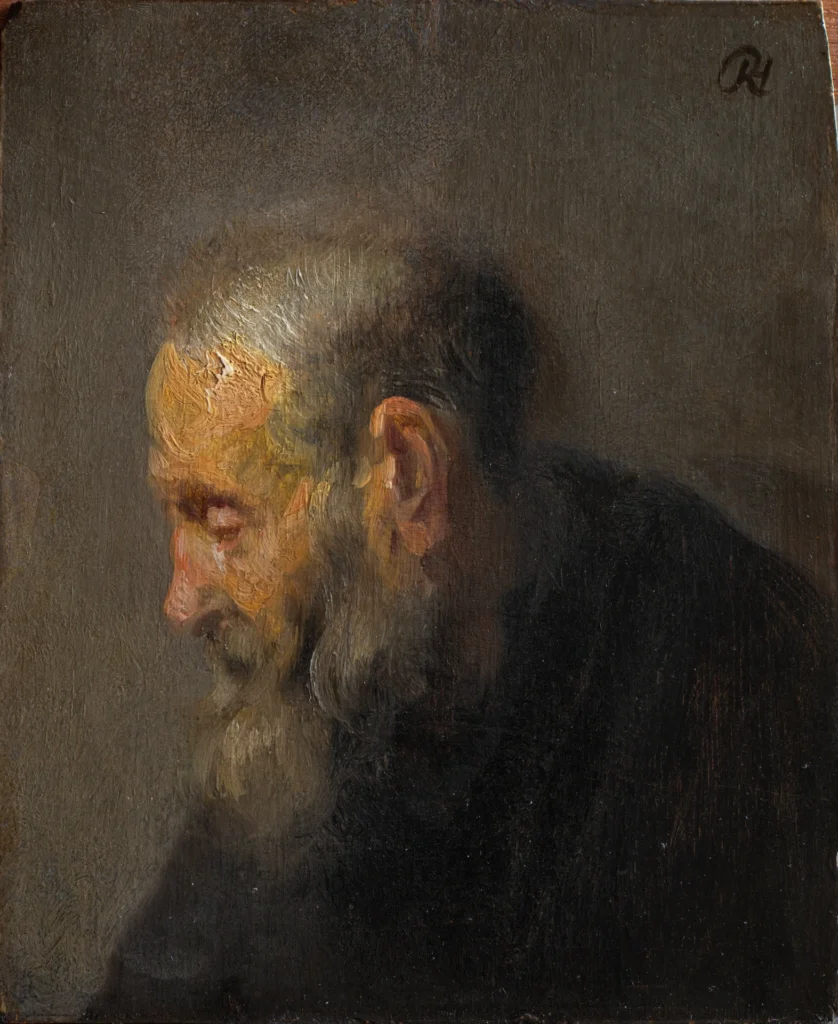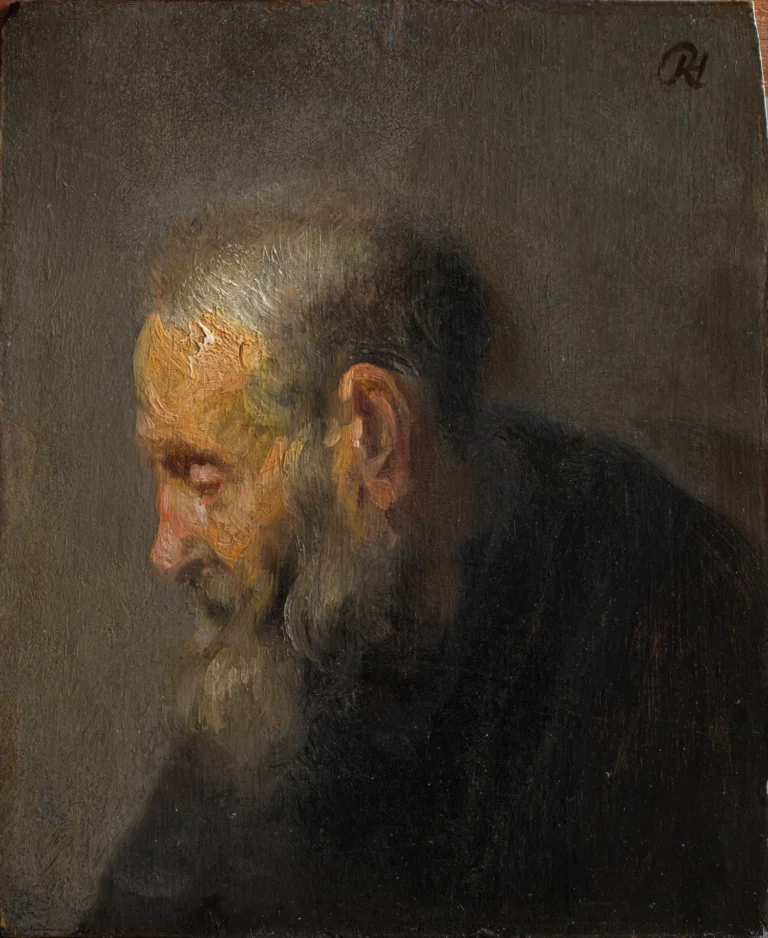Study of an Old Man in Profile
The Study of an Old Man in Profile is a thought-provoking painting that embodies the emotional depth characteristic of Rembrandt's work, yet it remains a subject of attribution controversy. Initially credited to Rembrandt, the painting was later deemed 'Style of Rembrandt', prompting discussions regarding its authenticity. With strong characterizations typical of a 'tronie', it captures the essence of human emotion, crafted through broad brushwork and dark tones that invite viewers to explore deeper narratives within the piece.
Late 17th Century
About the Artwork
The Study of an Old Man in Profile carries a narrative of doubt and fascination. Once confidently attributed to the master Rembrandt van Rijn, the painting's authenticity was questioned after technological analysis revealed a head painted over another, suggestive of posthumous imitation. This raises compelling questions about the nature of artistic emulation and the esteem in which Rembrandt's style was held. Created as a 'tronie', the work embodies an exploration of character and expression, aiming to evoke profound emotional responses. It is not merely a portrait but a window into the human condition, echoed through generations of artists who sought to capture the same depth in their expressions.
Did You Know
Rembrandt van Rijn, known as one of the most significant painters in European art history, greatly influenced the portrayal of human emotion and light in art. His techniques and style have inspired countless artists and movements long after his death in 1669.
‘Tronie’ refers to a genre of painting that represents a character or a type, often highlighting a particular facial expression or gesture. This type of study was common in Dutch Golden Age painting, allowing artists to express emotion and nuance without the traditional constraints of formal portraiture.
The use of X-radiographs in art history has become increasingly prominent for assessing authenticity. In the case of this painting, scanning revealed layers beneath the surface, providing insight into the artist’s process and the uncertainties surrounding its attribution.










